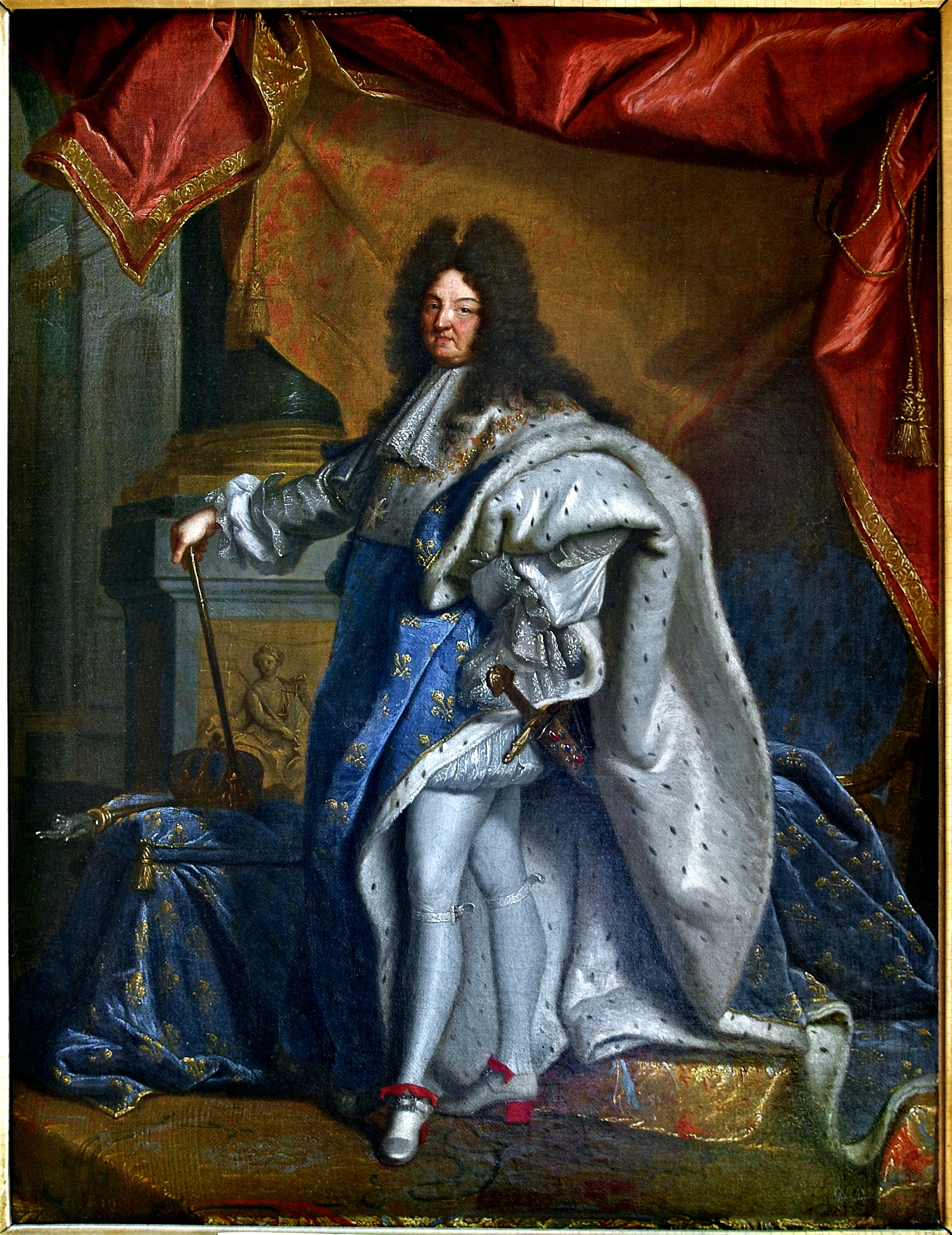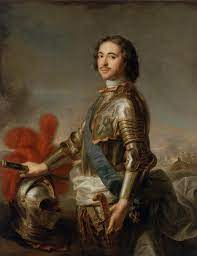Jillian Holbrook
Catherine Brown
AP European History 🇪🇺
335 resourcesSee Units
Absolutism and Divine Rights 🏰
Absolutism was a form of government in which all sovereign power rested in the hands of a single monarch. Absolute monarchies notably limited participation by the nobility in governance while preserving the social position and legal privileges of the aristocracy. These rulers claimed and justified their power by divine right, the philosophy that authority came directly from God, and that monarchs were entitled to rule without interference from other government institutions or individuals.
Divine rights were widely accepted in Europe during the Middle Ages to legitimize authoritative control over the affairs of the state and the people within it. Since rulers were only accountable to God, their subjects could not question or resist this authority.
In an absolutist state, the ruler, as the ultimate authority, made all laws and decisions. Without the separation of governmental powers or checks by external bodies, there were abuses of authority by absolutist monarchs who suppressed the individual freedoms of the general population.
Foundations of French Absolutism 🇫🇷
Absolutist monarchs limited participation in government, usually that of the aristocracy or nobility, as lower social classes exercised limited, if any, political participation. At the same time, absolute monarchs preserved the social and legal privileges of the aristocracy in order to maintain their support.
In France, Henry IV and Louis XIII helped lay the foundations of absolute rule.
Henry IV (previously Henry of Navarre) became the first Bourbon king of France after his marriage to Margaret of Valois. Henry was a Protestant who converted to Catholicism to secure his title during a period of religious strife between Catholics and Protestants. He eased decades of religious conflict when he signed the Edict of Nantes in 1598, confirming Catholicism as the state religion while granting religious tolerance to French Protestants known as Huguenots.
Henry and his Chief Minister, Sully, worked to consolidate the bureaucracy and win support from the nobility. Sully also helped Henry reduce the national debt, build new roads and canals, and revive the economy through industry and agriculture.
To raise money, Henry sold titles of nobility called “robe nobles.” Members of the robe nobles were entitled to certain privileges, such as the right to wear certain types of clothing, to bear titles, and to participate in specific ceremonies and events. Similar to other nobility, robe nobles were also exempt from taxes, leaving the tax burden to fall mainly on French peasants.
After Henry IV's assassination in 1610, Louis XIII came to power at the age of nine. Louis appointed Cardinal Richelieu as Chief Minister in 1624, and Richelieu essentially ruled France until his death in 1642.
Under Richelieu, French royal power increased. By introducing the intendant system, where royal officials known as intendants enforced royal decrees, collected taxes, and maintained public order, France experienced centralization, as intendants answered directly to the monarchy. Richelieu also increased the power of the monarchy by further reducing the influence of the nobility and the Church, which established the kind as the supreme authority in France.
Additionally, Richelieu was a key figure in French foreign policy, and he sought to increase France's influence on the European stage. He engaged in several wars and diplomatic efforts that helped extend French control over territory and supported the Protestants in the Thirty Years War, leading to the defeat of the Habsburgs. These efforts allowed France to emerge as a leading European power.
Louis XIV: The Sun King ☀️
The French monarchy under Louis XIV (1643-1715) is a notable example of absolutism in European history. Louis XIV, also known as the "Sun King," believed in the divine right of kings and the absolute authority of the monarchy. He centralized power in the French state and increased the power and prestige of the monarchy at the expense of the nobility and the Church.

Louis XIV came to power in 1643. When nobles led a rebellion known as The Fronde in an attempt to limit the monarchy, Louis built the magnificent Palace of Versailles outside of Paris to exert more control over the nobility. His title of the "Sun King” refers to the idea that French society revolved around him, and Louis XIV allegedly proclaimed, “L’etat, c’est moi,” meaning “I am the state.” With the help of his finance minister, Jean-Baptiste Colbert, Louis XIV used an absolutist approach to power to extend administrative, financial, military, and religious control of the central state over the French population.
Military modernization under state control increased authority centralization efforts. Colbert implemented a number of reforms to strengthen and update the French military. He established military academies and institutes to train officers in addition to a system of universal military conscription that required all young men to serve. New ships upscaled the size of the French navy, and Colbert also worked to improve the equipment and logistics of the French military, including manufacturing centers to produce weapons and other military supplies.
.
Financially, Colbert helped Louis XIV build a centralized state by improving the infrastructure of the French economy. These efforts included constructing more canals and roads to facilitate commerce and measure to protect French industries from foreign competition, including tariffs on imported goods. However, the tax system remained flawed, which would create problems when Louis needed to fund his many wars of expansion.
Louis XIV exercised absolute power to control French religion. As a devout Catholic, he aimed to suppress Protestantism in France and to establish the Catholic Church as the dominant religion in the country.
To increase the control of the Church over the French population, he revoked the Edict of Nantes and replaced it with the Edict of Fontainebleau, proclaiming, "One king, one law, one faith.”
The end of religious tolerance effectively made Protestantism illegal in France. Additional laws restricted the rights and freedoms of Protestants, including the right to worship, to hold public office, and to own property. Many Huguenots fled France, depriving France of labor and conscripts.
As previously mentioned, Louis XIV engaged France in a series of wars of expansion against other European nations. With religious oppression and a problematic tax system, Louis XIV caused financial problems that would plague France for decades.
🎥 Watch: AP European History - Absolutist France
Russian Absolutism 🇷🇺
Russia experienced a “time of troubles” in the 16th century after the reign of the brutal Ivan the Terrible. In order to restore order, the nobles (known as boyars) elected Michael Romanov as tsar. The Romanov Dynasty continued on to rule Russia from 1613 until the Russian Revolution in 1917.

As part of the Romanov Dynasty, Peter the Great assumed the throne in 1682, ruling until 1725. He was considered an “enlightened monarch,” bringing Enlightenment ideas and reforms to Russia. Realizing Russia had fallen behind Western Europe, Peter acted as an absolute monarch to modernize the country. He traveled to Holland and England to observe western customs and militaries.
During his reign, Peter the Great established a centralized bureaucracy and introduced new laws, tax codes, and legal codes based on Western models. The construction of the city of St. Petersburg began in 1703 as Russia’s “window to the West,” serving as a symbol of modernization and westernization.
As part of instituted social reforms to align with Western fashions, Russian women could appear in public without veils. Peter the Great also ordered boyars to shave their traditional long beards and serve in the army or administrative positions. These reforms changed the opportunities of the nobility. However, they furthered the gap between the nobles and peasants.
Peter developed Russian science, education, and industry. He encouraged shipbuilding, metalworking, and better infrastructure for Russia's roads and canals. He founded the Russian Academy of Sciences in 1724 based on a desire to promote and support research and innovation in Russia. The Russian Academy of Sciences was modeled after Peter's observations of the Royal Society of London. The initial membership included Russian scholars and foreign scientists who were invited to work in Russia. The academy was responsible for organizing scientific expeditions, publishing research, and awarding grants and prizes to scholars.
This support for technology, in combination with the formation of a standing army, played a role in Russian military modernization. Peter the Great brought German military leaders to train his army and help build a navy. Beyond domestic reforms, military modernization helped Peter the Great engage in a series of wars with neighboring countries to establish Russia as a major European power. When Peter launched the Great Northern War against Sweden in 1721, Russia took control of the Baltic Sea from the Swedes,
Overall, Peter the Great's reforms significantly impacted the development of Russia, transforming the country from a backward, feudal state into a modern, westernized nation. After the end of his absolutist rule, Catherine the Great succeeded and continued his reforms, most notably in education and territorial expansion.
Catherine the Great saw education as a way to improve the lives of her subjects and strengthen the country as a whole. During her reign, she built off Peter's absolute power and efforts to improve Russian innovation by creating the Smolny Institute for Noble Maidens, a boarding school for girls from wealthy families. The school offered a comprehensive education, including courses in literature, science, and the arts. Yet Catherine the Great also worked to improve the education system for boys, building new schools and academies that include Russia's first university, the Moscow University.
🎥 Watch: AP European History - Absolutist Russia
Browse Study Guides By Unit
🎨Unit 1 – Renaissance & Exploration
⛪️Unit 2 – Reformation
👑Unit 3 – Absolutism & Constitutionalism
🤔Unit 4 – Scientific, Philosophical, & Political Developments
🥖Unit 5 – Conflict, Crisis, & Reaction in the Late 18th Century
🚂Unit 6 – Industrialization & Its Effects
✊Unit 7 – 19th Century Perspectives & Political Developments
💣Unit 8 – 20th Century Global Conflicts
🥶Unit 9 – Cold War & Contemporary Europe
📚Study Tools
🤔Exam Skills
👉Subject Guides

Fiveable
Resources
© 2025 Fiveable Inc. All rights reserved.